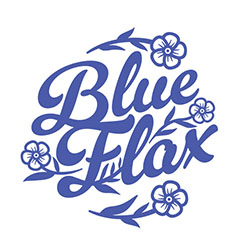Understanding Pencil Softness
A Guide from 9B to 9H and Which is Best for You
When choosing a pencil, one of the most important factors to consider is the pencil’s softness or hardness, often represented by a grading scale from 9B (softest) to 9H (hardest). This scale helps determine the quality of lines, shading, and precision in your work. Whether you’re sketching, writing, or doing detailed technical drawings, selecting the right pencil can make all the difference.
What Do the Numbers and Letters Mean?
- B stands for Black and indicates the pencil’s softness. Softer pencils leave a darker, richer mark but wear down more quickly.
- H stands for Hard and refers to a pencil’s hardness. Harder pencils produce lighter, finer marks and retain their sharp points longer.
- The higher the number before the B or H, the more extreme the softness or hardness. For example, a 9B pencil is much softer than a 5B, and a 9H is harder than a 3H.
Here’s a breakdown of the most common pencil softnesses, from 9B to 9H, and their typical uses.
9B – Ultra Soft
- Use for: Dark, expressive sketches, bold shading, and rich, deep lines.
- Ideal for: Artists who need dramatic shading and smooth, dark marks. 9B is perfect for expressive drawing, sketching, and areas that require heavy shading.
8B – Very Soft
- Use for: Strong contrast and deep shading.
- Ideal for: Creating dark, thick strokes with easy blending. Often used in detailed, artistic sketches and portraiture for bold shadowing.
7B – Soft
- Use for: Dark tones and smooth gradients.
- Ideal for: Those needing soft, thick lines that are easily blended. Excellent for shading in sketching and drawing.
6B – Soft
- Use for: Darker, softer lines, especially in sketching.
- Ideal for: Artists looking for easy shading and bold strokes. Works well for dynamic sketches, adding texture or depth to your drawings.
5B – Soft
- Use for: Bold lines with dark tones.
- Ideal for: Shading and tonal drawing. Provides a balance between dark lines and smooth shading. Often used for general-purpose art sketching.
4B – Medium Soft
- Use for: General sketching with a bit of contrast.
- Ideal for: Artists looking for a medium-soft pencil. Works well for both detailed shading and softer linework.
3B – Medium Soft
- Use for: Rich, dark lines with light shading.
- Ideal for: Perfect for those who want darker lines with smooth gradients. Great for general sketching and artistic detail.
2B – Medium
- Use for: Everyday drawing, sketching, and writing.
- Ideal for: The go-to pencil for most artists and students. Offers a good balance between soft shading and precise lines.
B – Medium
- Use for: Slightly softer than the standard pencil, useful for detailed sketches.
- Ideal for: Light sketching and writing. B pencils provide softer lines that still hold their shape during use.
H – Hard
- Use for: Light, fine lines, and precise technical drawing.
- Ideal for: Architects, engineers, and designers who need a hard pencil for fine, sharp lines that won’t smudge easily.
2H – Hard
- Use for: Fine lines and technical details.
- Ideal for: Those looking for precision in writing, drafting, and detailed artwork. 2H pencils hold a sharp point for long periods, making them great for fine, intricate work.
3H – Hard
- Use for: Extremely fine, crisp lines with less smudging.
- Ideal for: Artists and illustrators who need clean, sharp details without much tonal variation.
4H – Hard
- Use for: Ultra-fine lines with very little marking.
- Ideal for: Professional technical and architectural drawing. Great for ultra-detailed sketching and precision in fine-line work.
5H – Hard
- Use for: Sharper, lighter lines with minimal shading.
- Ideal for: Precision work, including drafting and fine line details where the lightest touch is required.
6H – Very Hard
- Use for: Extremely fine lines with a high level of precision.
- Ideal for: Artists, engineers, and architects who need to create very fine, precise details, often on delicate surfaces or paper.
7H – Very Hard
- Use for: Lightest, sharpest lines with minimal darkening.
- Ideal for: Artists needing maximum precision and minimal shading, especially when working on delicate and thin paper surfaces.
8H – Ultra Hard
- Use for: Extremely fine, very light marks.
- Ideal for: Precision drafting, fine-line technical drawing, and detailed artwork where only the lightest lines are needed.
9H – Ultra Hard
- Use for: Super fine lines, ideal for fine technical drawing.
- Ideal for: Those who need ultra-precision without any darkening or heavy marks. Typically used for extremely fine lines in professional architectural and technical drawings.
Which Pencil Should You Choose?
- For Artists: If you’re creating artwork, your choice depends on the type of work you’re doing. Softer pencils (B, 2B, 5B, 9B) are great for sketching, shading, and creating depth. Harder pencils (H, 2H, 4H) are perfect for fine lines, detailing, and precision work.
- For Technical Drawing: If you’re working on precise technical drawings or architectural sketches, harder pencils (H, 2H, 4H, 9H) are typically preferred for their sharpness and light lines.
- For Everyday Use: If you’re just writing or doing general sketching, a medium pencil like 2B or HB (which is the standard) offers the best balance of smooth writing and durability.
Conclusion
Choosing the right pencil for your project comes down to understanding how different levels of softness and hardness will affect the marks on your page. Softer pencils create darker, bolder lines, while harder pencils are used for finer, lighter, and more precise marks. Whether you’re sketching, shading, or writing, knowing the ideal pencil softness for your task will help you achieve better results and improve your overall workflow.
